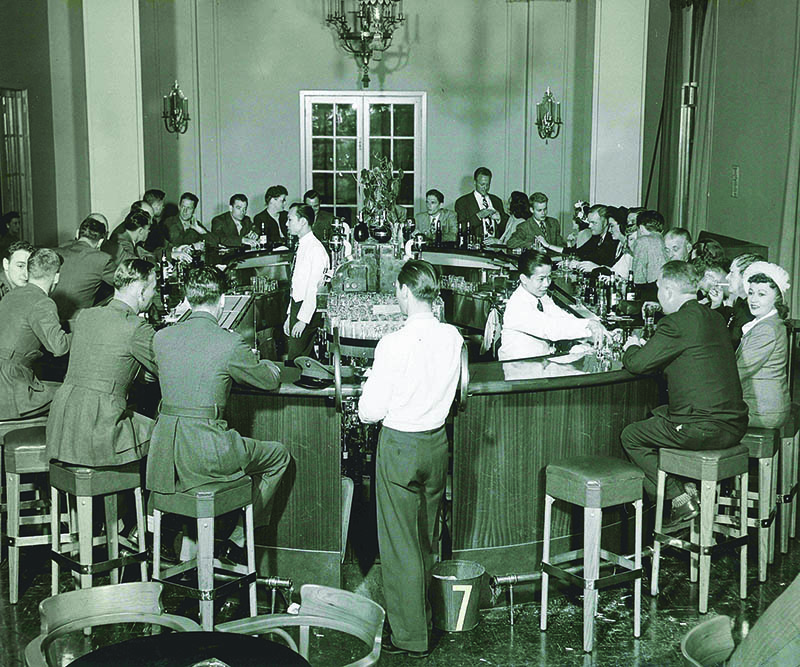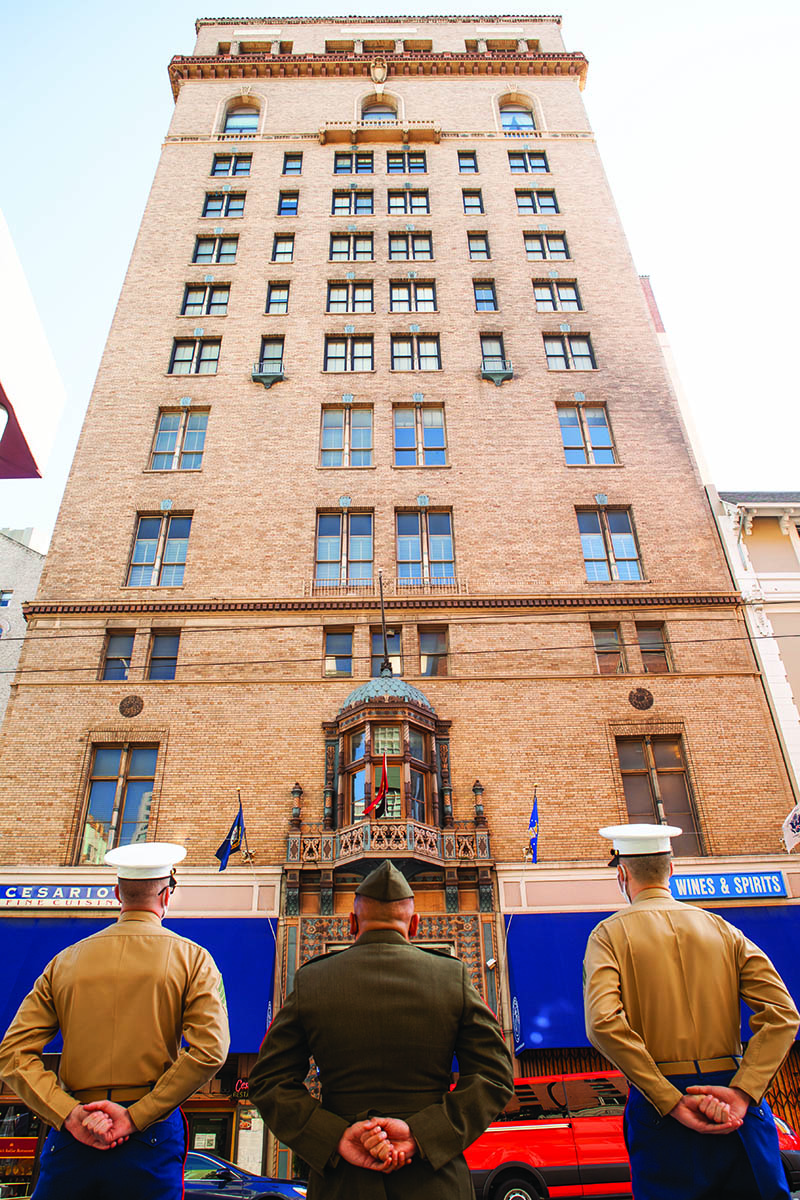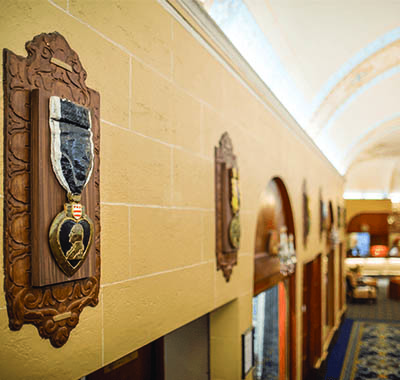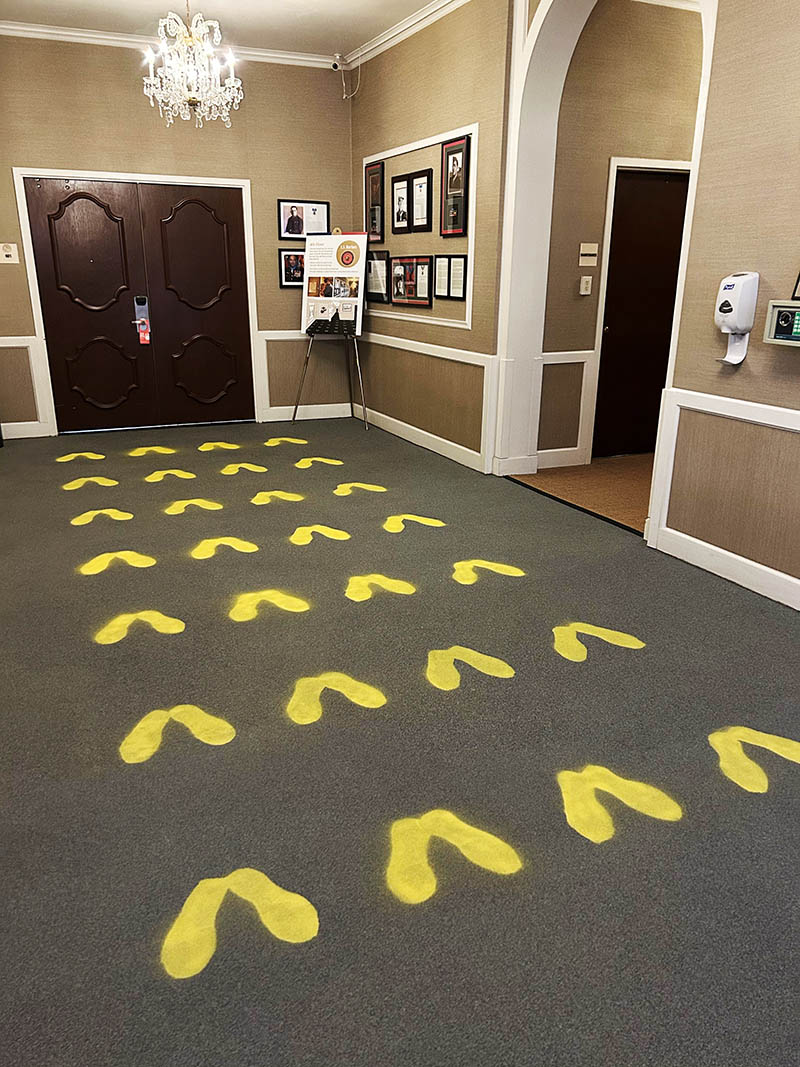
Where History Comes to Stay: Historic Marines’ Memorial Hotel in San Francisco Continues to Evolve
By: Kipp Hanley and Col Chris Tavuchis, USMC (Ret)Posted on January 15, 2025
With the outbreak of World War II in the Pacific and the growth of the San Francisco Bay area military infrastructure, the United States Marine Corps expanded its presence along with the Navy. In addition to the service at the Mare Island Naval Shipyard, the Marines eventually operated a large logistics center in Oakland, training facilities such as Camp Parks in Dublin, Calif., and U.S. Naval Magazine Port Chicago (later the Naval Weapons Station), Concord, Calif.
As a result of the large Marine presence in the Bay area and emerging out of necessity in 1946, the Marine Corps decided it needed to provide a place to commemorate the exploits of Marines in the Pacific and provide a place for leathernecks and their families to visit.
So, in 1946, after Marine Corps Commandant General Alexander A. Vandegrift proposed establishing a memorial to the Marine Corps sacrifice during the war that he directed the purchase of the Marines’ Memorial as “A tribute to those Marines who have gone before; and a service to those who carry on.” With the blessings of the Secretary of the Navy, assisted by a very motivated group of Marines, a building to suit the purpose was purchased in San Francisco in 1946 and, with the grand opening on Nov. 10, 1947, the Marines’ Memorial Club & Hotel (MMC&H) was established.
Built in 1926 on the corner of Sutter and Mason Streets, at 609 Sutter Street, the Beaux Arts-style building originally served as the Western Women’s Club and was later leased to the Navy for service as a Women Accepted for Volunteer Emergency Service (WAVES) barracks in 1942. With the Japanese surrender on Sept. 2, 1945, the United States embarked on an aggressive demobilization plan that saw the Marine Corps reduced from a wartime high of six divisions, five air wings, and supporting troops and many of these returning Marines—those not on occupation duty in Japan or China—passed under the Golden Gate Bridge and arrived in the Bay Area for demobilization.
Initially opened as a memorial to Marines who fought and died in the Pacific, the Marines’ Memorial served as a waystation for Marines and their families as they processed out of the Corps and provided them with an affordable place to stay in a busy and relatively expensive San Francisco. For its 78 years in service to members and veterans of the Navy, Marine Corps, Army, Air Force, Coast Guard, and the Space Force, the Marines’ Memorial has become a fixture to Bay Area visitors and veterans .The MMC&H still stands out as both a veteran landmark and a hospitality hot spot.

“San Francisco was their last stop before war, and a lot of them came back here and made their fortunes,” said Lieutenant General Mike Rocco, USMC (Ret), President and CEO of Marines’ Memorial Association & Foundation, about World War II Marine veterans. “It is just an incredibly historic city.”
The military history of the San Francisco Bay Area dates back to the mid-19th century when the United States occupied the Presidio in 1846 during the Mexican-American War, which ended with the American conquest of California. (Executive Editor’s note: see page 18 for more about the Mexican-American War.) Following the Mexican-American War (1846-1848) and during the California Gold Rush (1848-1855), California was granted statehood in 1850. In that year, the U.S. military establishment of the U.S. Army garrison at Fort Point (at the Golden Gate), on Alcatraz and the Presidio ensured the security of San Francisco Bay. In 1854, the Naval Shipyard Mare Island (NSYMI) in Vallejo was established, followed by construction of the Marine Barracks in 1862 under the command of Major Addison Garland.
At Mare Island (and later Hunters’ Point), the Marines were responsible for guarding critical infrastructure and normal shipboard duties as Marines did then. In 1912, the Marine presence at Mare Island—after the closing of a similar facility in Puget Sound—became the sole Marine Corps western recruit depot until it was replaced by Marine Base San Diego and later renamed MCRD San Diego in 1921. In the meantime, the Marine Barracks at Mare Island remained a mainstay of the Marines’ enduring presence in the Bay Area and boasted one of the best Bay area football teams. During WW II and later during the Korean and Vietnam Wars, the Bay area became a major arrival and departure point for Marines heading to and from the Pacific theater.
After the MMC&H was opened, senior Marine leaders acknowledged they needed to hand over the hotel and hospitality business and the Marines’ Memorial Association was established to run the club and hotel. As it happened, the Marines’ Memorial Association, now a 501(c) (19) veteran nonprofit organization, was established and took over running the Marines’ Memorial Club & Hotel was the first of its kind “Living Memorial” in the United States, offering historic exhibits featuring American military history from all eras, and a library and museum with artifacts and books donated by grateful members, veterans and their families. Over the years, the Marines Memorial Association evolved into a vibrant social and hospitality destination for members of the Armed Services and civilians alike.
In 2015, the Marines’ Memorial Foundation, a 501(c)(3) charitable organization, was founded by the Marines’ Memorial Association Board, driven by the Association’s success and the desire of members and patriots to provide additional support.
The foundation offers giving programs and direct support to the Marines’ Memorial Association, enhancing its efforts to honor the sacrifices of veterans and their families. Through the foundation, supporters and donors can contribute to and engage in the Association’s enduring mission to educate, commemorate, and serve active-duty servicemembers, veterans and their families, ensuring that their sacrifices are recognized and remembered. There are currently 20,000 primary and associate (family) members.
Replete with Marine Corps and other Services’ memorabilia, the Marines’ Memorial celebrates servicemembers of all eras, and each floor is adorned with military memorabilia from past and recent conflicts.
The historic exhibits are widespread throughout the facility and include a Memorial Wall on the 10th floor mezzanine that recognizes servicemembers from all service branches that paid the ultimate price for their country since 9/11.

Lieutenant General David A. Ottignon, USMC (Ret) was particularly impressed with the wall. The recently retired Commanding General of II Marine Expeditionary Force first stayed at the hotel in 2008 after participating in combat operations in Operation Iraqi Freedom a few years earlier.
“When the war [on terror] really got going, the [Tribute Memorial Wall] was really moving,” said Ottignon. “… The Marines that have fallen that we served with, to see them on the wall, it’s a very moving experience.”
The Ames Library—LtGen Rocco’s favorite room in the hotel—houses an attractive collection of books and artifacts donated by servicemembers of all eras and serves as a quiet place for members and guests to settle in with a daily newspaper or one of the many books from the stacks.
According to LtGen Rocco, the hotel will be spending the next several years dedicating specific floors to each service branch. A groundbreaking was held in November in which they unveiled the yellow footprints on the Marine Corps floor, symbolizing the first steps recruits make as they walk onto Parris Island for the first time.
With 136 guest rooms, two spacious ballrooms, and professional meeting rooms, the MMC&H is more than simply a hotel or living memorial. The MMC&H offers a restaurant, a business center, a three-lane 25-yard lap pool, a contemporary fitness center, a 500-plus person theatre, and routinely offers events such as its “Leading from the Front” and “Meet the Author Series” that feature current military and civilian leaders and authors.
The MMC&H also hosts annual events throughout the year, including Marine Corps Birthday Balls that feature senior Marine leaders as guests of honor like Ottignon.
In addition to Club events, the MMC&H routinely hosts retirements, conferences, weddings and the annual San Francisco Fleet Week.

“They really go to the nines right around our birthday,” Ottignon said. “The community gets to see the Marines in blues, and [the hotel] has tie-ins to Fleet Week. They see [the Marines] congregate around the hotel and the light bulb goes on [for the public].”
The Marines Memorial Association and Foundation also hosts an annual Gold Star Parents event to honor those who have given the ultimate sacrifice and an annual scholarship program for members, their children, grandchildren and active and veteran servicemembers, all provided by generous donations from members and the public.
The MMC&H is renowned for its unique hospitality which is highlighted by free breakfast and happy hour at Chesty’s Bar and Grill on the 12th Floor where hotel guests enjoy complimentary drinks while catching up with old brothers-in-arms, all while enjoying the gorgeous views of downtown San Francisco. Two years ago, some of the last Marines to have fought at Guadalcanal took home a bottle of 1917 French cognac that was being stored at the hotel bar since World War II.
“Sergeant Major [Troy] Black was our guest of honor, so we took [the bottle] down and gave it to the members of the 1st Marine Division and they took it down to Camp Pendleton,” LtGen Rocco said.
Membership is available to all currently serving, active-duty and reserve, veteran, and retired members and families of all the uniformed services, the National Oceanographic and Atmospheric Administration (NOAA), the U.S. National Health Service (USPHS) Commissioned Corps, the Air and Army National Guard, ROTC/Military Academy cadets and midshipmen and all ranks are eligible to join. Annual membership for active-duty servicemembers is free when they sign up on site.
Joining the Marines’ Memorial Association has advantages even for those who cannot visit the Bay Area. Membership dues are tax deductible and help support the Marines’ Memorial Association services and programs for servicemembers and their families. Additional membership benefits include exceptional rates on over-night accommodations, a home-away-from-home in downtown San Francisco and the opportunity to meet and socialize with their fellow veterans and retirees, they also have access to more than 240 reciprocal clubs throughout the world where they enjoy the same high-quality accommodations at deeply discounted room rates. Some of the reciprocal clubs included are: The Army and Navy Club and the Georgetown Club in Washington, D.C.; the New York Athletic Club in New York City; the Coronado Cays Yacht Club near San Diego; and London’s Victory Services Club. In addition, members’ dues and guests’ fees also help to support the MMC&H’s outreach efforts including scholarships, professional and commemorative events, the Ames’ library and Living Memorial displays throughout the club and hotel.
From its original inception of serving Marines and their families as a place to recover from grueling Pacific duty to providing an exceptional living memorial to those who have gone before, the Marines’ Memorial Club & Hotel continues to serve and to hold a special place in the hearts of all armed servicemembers everywhere. For more information, visit www
.mmaf1946.org.
Author’s bio: Kipp Hanley is the deputy editor for Leatherneck Magazine and resident of Woodbridge, Va. The award-winning journalist has covered a variety of topics in his writing career including the military, government, education, business and sports.




